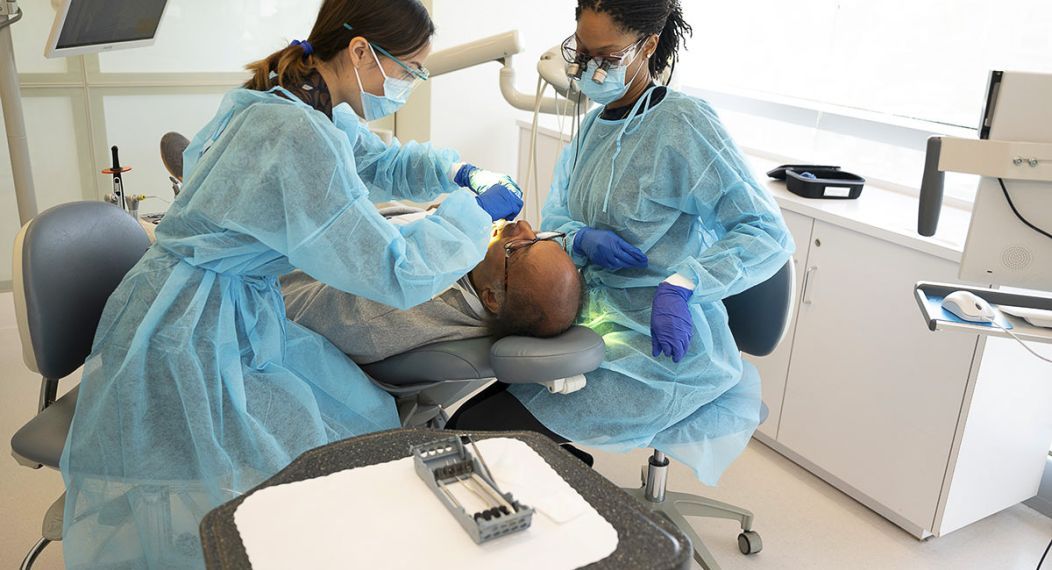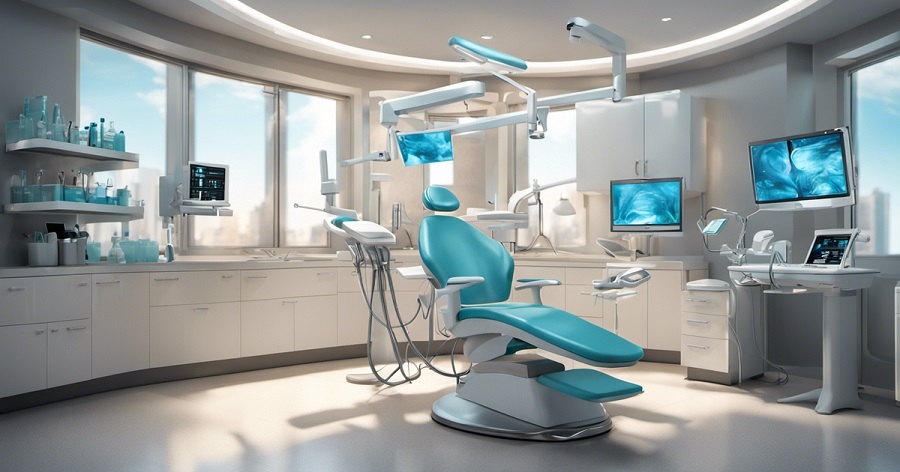Comprehending the most up to date Innovations in Dentistry and Their Impact on Person Treatment
The landscape of dentistry is undertaking a transformative change, driven by developments such as digital imaging technologies, 3D printing, and minimally invasive strategies. These innovations not only maximize diagnostic and therapy methods but likewise boost the general client experience by cultivating clearer communication and immediate outcomes. The rise of tele-dentistry is linking gaps in accessibility to care, particularly for underserved communities. As these developments unravel, it comes to be imperative to consider exactly how they reshape patient connections and impact decision-making in dental health and wellness management. What implications might these modifications hold for the future of dental treatment?
Digital Imaging Technologies
In recent times, digital imaging innovations have actually changed the field of dental care, enhancing diagnostic abilities and therapy planning. These innovations consist of methods such as electronic radiography, intraoral cams, and cone-beam calculated tomography (CBCT), which offer exceptional photo quality and reduced radiation direct exposure contrasted to typical imaging techniques.
Digital radiography offers prompt imaging results, allowing dentists to detect and resolve dental problems extra efficiently - Dental Implants Belle River. Intraoral cameras make it possible for thorough visualization of the mouth, facilitating much better communication with patients regarding their dental health and wellness. By providing high-resolution pictures, oral experts can efficiently discuss therapy choices and inspire clients to seek essential treatment
Cone-beam computed tomography (CBCT) has further transformed the landscape by offering three-dimensional imaging, which is very useful for complex cases such as dental implant planning and orthodontics. This technology enables accurate anatomical analyses, substantially boosting the accuracy of diagnostic and therapy procedures.
3D Printing Technologies

Furthermore, 3D printing has actually facilitated the development of complex dental versions that help in treatment planning and individual education. These designs give a substantial representation of intricate oral problems, cultivating better communication in between dental experts and clients - Dental Implants Belle River. Additionally, developments in biocompatible materials have increased the potential applications of 3D printing in dental implantology, allowing the manufacturing of personalized implants customized to individual anatomical demands
Moreover, educational organizations are progressively embracing 3D printing for training purposes, enabling trainees to exercise on practical models that replicate numerous scientific situations. In general, the assimilation of 3D printing developments in dentistry is not only improving procedures but also boosting the top quality of treatment provided to clients, marking a substantial leap ahead in the field.
Minimally Invasive Techniques
The development of dentistry is progressively characterized by a concentrate on minimally intrusive strategies, which focus on patient comfort and conservation of natural tooth framework. These strategies aim to reduce the demand for considerable exploration and invasive treatments, thereby enhancing the total patient experience and results.
Minimally intrusive techniques include various techniques, including air abrasion, laser dental care, and the use of biocompatible products. Air abrasion enables the removal of decay making use of a stream of fine bits, lessening damages to surrounding healthy tissue. Laser dental care utilizes concentrated light power to deal with dental caries and periodontal diseases with accuracy, typically leading to much less discomfort and faster healing times.
Furthermore, developments in adhesive dentistry allow more powerful bonds in between dental materials and all-natural tooth framework, helping with efficient repairs while preserving more of the original tooth. This not only strengthens the durability of dental work but additionally sustains the aesthetic integrity of clients' smiles.
As these strategies remain to progress, they hold the pledge of boosting patient treatment by lowering stress and anxiety, reducing healing times, and promoting far better long-lasting oral health and wellness. Ultimately, the shift in the direction of minimally intrusive dentistry stands for a significant development in the area, aligning with modern healthcare worths.
Tele-Dentistry Growth
Tele-dentistry has emerged as a transformative pressure in the dental market, boosting access to care and improving patient-provider communications. This ingenious technique makes use of electronic interaction innovations to assist in remote assessments, diagnosis, and therapy planning, effectively linking geographical barriers and lowering that site the demand for in-person sees.
The growth of tele-dentistry has been particularly beneficial for underserved populations, where dental care accessibility is commonly minimal. Via virtual consultations, individuals can receive timely examinations and advice without the logistical challenges of traveling to an oral workplace. Additionally, tele-dentistry makes it possible for dental experts to handle follow-up care more efficiently, enabling constant surveillance of treatment development.
Furthermore, the integration of tele-dentistry into practice has caused boosted operational efficiency for oral clinics. By decreasing no-show prices and simplifying consultation organizing, practitioners can optimize their resources and supply far a fantastic read better total patient treatment. As modern technology remains to advance, the capacity for tele-dentistry to boost client education and precautionary treatment measures will only expand, fostering a proactive strategy to oral wellness monitoring. Eventually, tele-dentistry represents a substantial advancement in the oral area, aligning with modern health care demands and patient expectations.
Enhancing Client Relationships
Structure solid person connections is important in modern dentistry, as it fosters trust fund and encourages open communication between dental professionals and their clients. This connection is fundamental for delivering customized treatment and improving therapy outcomes. As innovations in innovation, such as tele-dentistry, continue to improve the oral landscape, the focus on person partnerships is a lot more critical than ever before.

Additionally, the combination of individual education and learning into appointments can demystify dental procedures, empowering patients to make informed decisions concerning their oral health and wellness. This method not just grows trust yet additionally motivates adherence to therapy plans, eventually bring about much better health and wellness results.
Final Thought
The most current developments in dentistry, including digital imaging technologies, 3D printing, minimally invasive methods, and the development of tele-dentistry, significantly boost patient care. These technologies simplify diagnostic and treatment processes, assist in prompt outcomes, and boost interaction in between patients and experts. Additionally, they foster stronger patient partnerships and promote aggressive oral wellness management. Eventually, these growths equip people, equipping them with the required knowledge to make educated choices regarding their treatments and overall oral health.
By presenting high-resolution pictures, oral professionals can effectively clarify therapy alternatives and encourage clients to go after required care.
By using digital visite site impressions in conjunction with 3D printing, oral professionals can considerably minimize turnaround times, allowing for same-day treatments that enhance client contentment.
Additionally, 3D printing has actually assisted in the development of complex oral versions that aid in treatment preparation and patient education.Structure solid person connections is important in contemporary dentistry, as it cultivates depend on and encourages open communication in between oral professionals and their customers. Furthermore, using person feedback systems can improve service shipment and person complete satisfaction, making sure that their voices are heard.